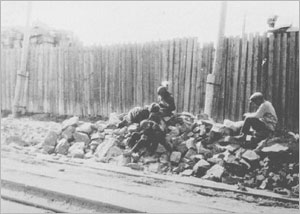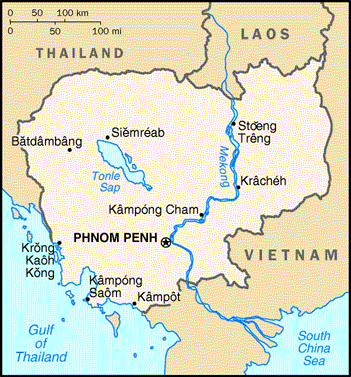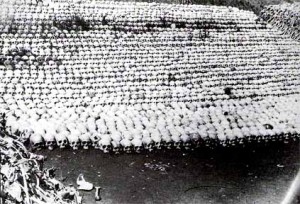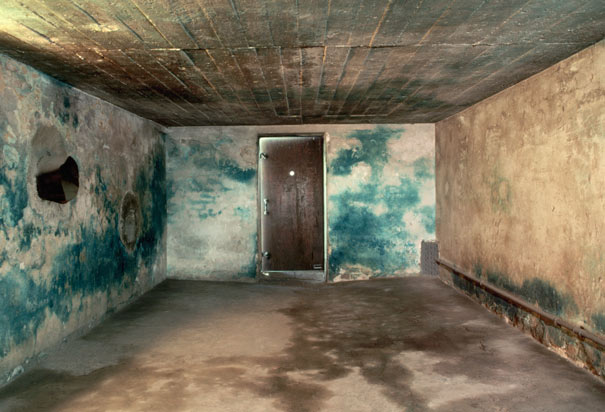
The Armenian Genocide was committed by the Ottoman Empire in what is now known as the Republic Of Turkey. Along with this, The Aremnian Genocide was the first genocide to occur in the 20th century. Since 1876, the Ottoman state had been led by Sultan Abdul Hamid II, but the words " kill every Armenian woman, child and man without concern for anything" spoken by Talaat Pasha (Former Ottoman Empire Leader) sparked the genocide.
It is said that the Armenian Genocide served as a blueprint for future Genocides. Similar to the Holocaust, the genocide of 1915 shows the similar interests and motives of mankind and it is the second most-studied case of genocide after the Holocaust. All genocides have been committed by humans, but in no way were they humane. Just as Germany had a "Jewish problem" the Armenian's had a "Young Turks problem." The genocide was an organized manner to eliminate the Armenians, seeing as Armenians were viewed as outsiders because they didn't speak the Turkish language.
There is no denying that religion was fundamental to the Armenian Genocide. Even though the most used factor is ethnicity, religion accounted more for a person’s identity than language or heritage. This is still demonstrated daily throughout the Islamic world today, where Muslim governments and Muslim mobs persecute Christian minorities. These minorities share the same ethnicity, language, and culture, and are essentially the same as the majority, except, of course, for being non-Muslims.
By the nineteenth century, the empire was in serious decline. It had been reduced in size and by 1914 had lost virtually all its colonies in Europe and Africa. This decline created enormous internal political and economic pressures which contributed to the intensification of ethnic tensions. Armenian aspirations for representation and participation in government aroused suspicions among the Muslim Turks who had never shared power in their country with any minority and who also saw nationalist movements. In response to the issues in the Ottoman Empire, a new political group called the Young Turks seized power by revolution in 1908.
Essentially, the Armenian Genocide occurred in two phases. First all men were mass murdered or forced into labor camps, then, all women children and elderly were deported or taken on death marches in the Syrian Desert similar to those of the holocaust. If early 20th century Turkey had the technology to execute in mass murder like 1940's German gas chambers;the entire Armenian population may well have been eliminated.
Over 1 million people were killed just from the death marches. The deportations were disguised as a resettlement program. The brutal treatment of the deportees, most of whom were made to walk to their destinations, made it apparent that the deportations were mainly intended as death marches. As well as the policy of deportation surgically removing the Armenians from the rest of society, it disposed of great masses of people with little or no destruction of property. The deportation process served as a major opportunity for the Ottoman Empire to claim the material wealth of the Armenians and proved an effortless method taking all of their properties.

Armenian civilians, escorted by armed Ottoman soldiers, are marched to a nearby prison
On April 24th 1915, Ottoman officials arrested over 250 Armenian political, religious, educational, and intellectual leaders next. Next, the Turkish government ordered the deportation of the Armenian people to "relocation centers" - actually to the barren deserts of Syria and Mesopotamia. forced Armenians out of their homes and marched them through the Syrian Desert without food or water. Massacres occurred without any regard to gender, age, or religion. Ottoman troops escorting the Armenians allowed others to rob, kill, and rape other Armenians, and often participated in these activities themselves. The death rate from starvation and sickness is very high and is increased by the brutal treatment from the Officials whom acted as slave drivers throughout the march.

Bodies of the deceased lay in piles across the Syrian Desert
Reports of the murders gradually came out and were eventually spread the world over by newspapers, journals, and eyewitness accounts. In the United States a number of prominent leaders and organizations established fundraising drives for the remnants of the "Starving Armenians". In Europe the Allied Powers gave public notice that they would hold personally responsible all members of the Turkish government and others who had planned or participated in the massacres. Yet, within a few years, these same governments and statesmen turned away from the Armenians in total disregard of their pledges. Soon the Armenian genocide had become the "Forgotten Genocide".

Demons of the Past: The Armenian Genocide and the Turks
The memory of the nation was intended for obliteration. The existence of Armenians in Turkey was denied by Turkish Government and maps and history were rewritten. Churches, schools, and cultural monuments were destroyed and misnamed. Armenian children were taken from their parents and placed in homes where they would grow up as Turks. Nations worldwide and several states of the U.S. have passed resolutions recognizing the Armenian Genocide despite of Turkish government’s consistent denial of the recognition of the Armenian Genocide, especially by Western countries.

Main article: Witnesses and testimonies of the Armenian Genocide in the New York Times
Despite the denial; documents authenticated by Turkish authorities in 1919 in a telegram sent in June 1915 by Dr. Sakir, one of the leaders of the organization that carried out the planning the Genocide. He asks the provincial party official who is responsible for carrying out the deportations and massacres of Armenians within his district: "Are the Armenians, who are being dispatched from there, being liquidated? Are those harmful persons whom you inform us you are exiling and banishing, being exterminated, or are they being merely dispatched and exiled?" showing proof not only from the few survivors but physical evidence.
More than one million Armenians died as the result of execution, starvation, disease, the harsh environment, and physical abuse. People who had lived in eastern Turkey for nearly 3,000 years lost their homes and were reduced in the first large-scale genocide of the twentieth century. At the beginning of 1915 there were about two million Armenians living in Turkey; today there are fewer than 60,000.





















